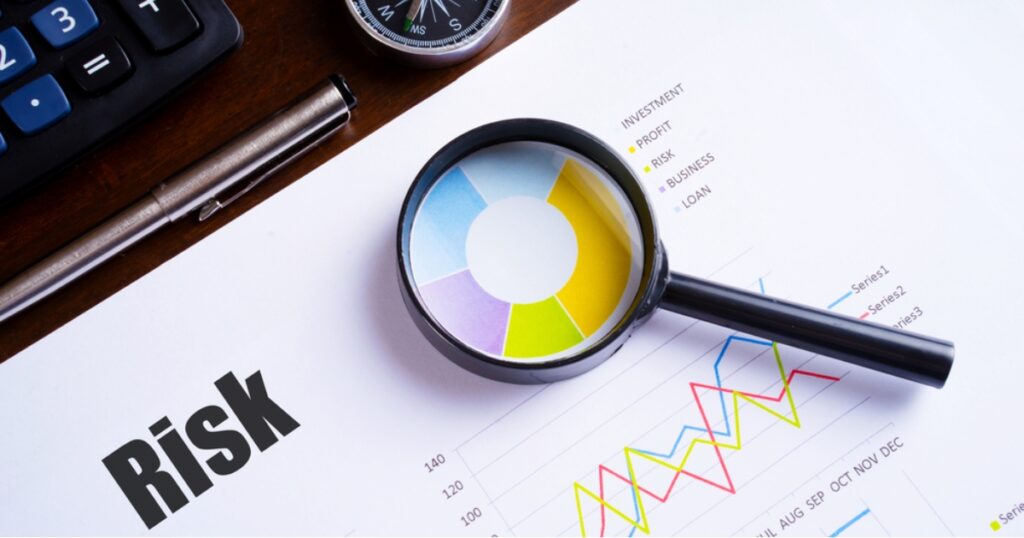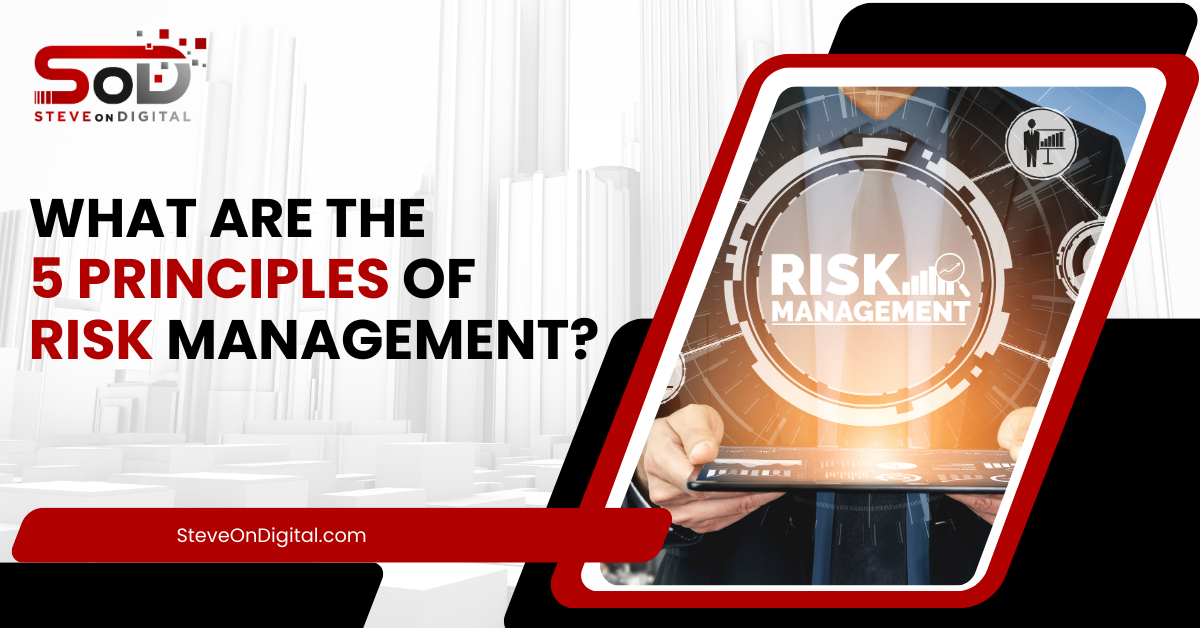The 5 principles of risk management serve as the cornerstone for effectively identifying, assessing, and mitigating risks within an organization.
These principles are;
1) Risk Identification, where potential threats are recognized;
2) Risk Analysis, to understand the nature and impact of these risks;
3) Risk Evaluation and Prioritization, which helps determine which risks require immediate attention;
4) Risk Mitigation, involving strategies to minimize the impact of risks; and
5) Continuous Monitoring, to ensure that risk management strategies are effective and adapt to new threats.
Together, these principles provide a structured approach to managing uncertainties, enabling organizations to achieve their objectives while minimizing potential negative impacts.
One compelling example of the evolving risk landscape is the increasing importance of climate risk and ESG (Environmental, Social, and Governance) considerations in credit portfolio management.
A McKinsey survey highlighted that 86% of participants identified climate and ESG risks as significant challenges for the next two to three years.
This underscores the importance of integrating risk management into the strategic planning and operational processes of businesses.
Crafting Your Risk Management Framework
In the realm of digital transformation and business strategy, establishing a robust Risk Management Framework is non-negotiable.
It’s the bedrock upon which organizations can navigate the unpredictable waters of operational, financial, and strategic risks.
- Defining The Framework: At its core, a risk management framework encompasses policies, procedures, and technologies that a business employs to identify, analyze, manage, and monitor risks. Drawing from my own journey, integrating a framework based on the five principles of risk management has been pivotal. It’s about more than just avoiding pitfalls; it’s about ensuring sustainable growth and resilience.
- Integration With Business Objectives: A well-structured framework aligns seamlessly with your business objectives, ensuring risks are managed in a manner that supports your goals. For example, if expanding into new markets is a goal, your risk management framework should include strategies for navigating geopolitical risks and compliance challenges.
- Technology’s Role: In today’s digital age, leveraging technology within your framework is indispensable. Advanced analytics and AI can provide predictive insights, enhancing your risk identification and analysis capabilities. From personal experience, adopting these technologies has transformed reactive risk management into a proactive stance, significantly mitigating potential threats before they escalate.
- Continuous Improvement: A dynamic framework isn’t static; it evolves. Incorporating lessons learned from past projects and adjusting to emerging risks ensures your framework remains robust and relevant. Reflecting on previous initiatives, I’ve found that this adaptability has been key to staying ahead of risks.
Principle 1: Risk Identification
Risk identification is the initial step in the risk management process, where businesses identify potential risks that could impact their operations.
This involves using various techniques and tools such as Bowtie Analysis, Fault Tree Analysis (FTA), and Event Tree Analysis (ETA) to systematically identify risks.
From my past projects, employing these tools has provided invaluable insights into potential threats, enabling us to devise robust strategies to mitigate them effectively.
Principle 2: Risk Analysis
Following risk identification, the next step is risk analysis, which assesses the nature and extent of the risk.
This can be done through qualitative and quantitative methods, providing a comprehensive understanding of each risk’s impact.
For instance, quantitative risk analysis might include using Monte Carlo Simulation to predict the probability of different outcomes under uncertainty.
Incorporating data analytics into risk management can significantly enhance the process.
For example, leveraging big data allows for the identification of emerging risks by analyzing vast amounts of internal and external data.
This approach has been instrumental in my experience, enabling us to predict potential issues before they materialize.
Principle 3: Risk Evaluation And Prioritization
In my journey as an entrepreneur, I’ve learned the critical importance of evaluating and prioritizing risks within any project or business venture.
Risk evaluation involves assessing the potential impact and likelihood of identified risks, ensuring a strategic approach to managing what threatens our objectives.
Understanding Risk Evaluation
Risk evaluation allows us to weigh the consequences of risks against our project goals or business objectives.
This process is crucial for distinguishing between minor setbacks and critical threats, ensuring resources are allocated effectively.
Techniques For Risk Scoring And Ranking
Using techniques such as risk matrices and scoring systems, we can rank risks by their severity and likelihood.
These tools help in visualizing risks, making it easier for teams to understand and prioritize them.
In my experience, applying these techniques has enabled more informed decision-making and focused risk mitigation strategies.
Introduction To Risk Assessment Matrix
A Risk Assessment Matrix is a tool I’ve used extensively to categorize risks.
It plots the likelihood of a risk occurring against its potential impact, helping to prioritize risks based on a color-coded system.
This visual representation is invaluable for communicating risk priorities to stakeholders.
| Risk Likelihood | Minor Impact | Moderate Impact | Major Impact |
| Very Likely | Green | Yellow | Red |
| Likely | Green | Yellow | Orange |
| Unlikely | Green | Green | Yellow |
Risk Acceptability Criteria
Setting clear risk acceptability criteria is vital.
It defines the thresholds for what is considered an acceptable or unacceptable level of risk, guiding decision-making processes and ensuring consistency in how risks are treated across the organization.
Prioritization Of Risks For Effective Management
Prioritizing risks involves distinguishing which risks need immediate attention and which can be monitored over time.
This step is crucial for resource allocation, focusing efforts on preventing or mitigating the most significant risks first.
Principle 4: Risk Control And Mitigation
Strategies For Risk Control And Mitigation
Effective risk management requires a blend of strategies tailored to the specific risks and the industry context.

For instance, in the Oil and Gas industry, risk control might include rigorous safety protocols and environmental impact assessments.
Risk Control Techniques
- Risk Avoidance: Avoid activities that carry a high risk of negative impact.
- Risk Reduction: Implementing measures to reduce the likelihood or impact of risks. For example, enhancing security measures to prevent data breaches.
- Risk Spreading: Distributing risk across different projects, products, or investments to minimize the impact of a single failure.
- Risk Transference: Shifting risk to another party, such as through insurance or outsourcing.
From my past projects, utilizing a combination of these techniques has been crucial in managing the inherent risks effectively.
Principle 5: Risk Monitoring And Review
Continuous Process Of Monitoring And Reviewing Risks
An ongoing process of risk monitoring and review is essential for adapting to new information or changes in the external environment.
This involves regular assessments to ensure risk management strategies remain effective and relevant.
Role Of Stakeholders In The Risk Review Cycle
Engaging stakeholders in the risk review process ensures a broader perspective, fostering a culture of transparency and collective responsibility for risk management.
Their insights can be invaluable for identifying new risks or reassessing existing ones.
Importance Of A Dynamic And Adaptive Risk Management Process
The dynamic nature of risks, especially with emerging challenges like climate change and digital transformation, requires an adaptive risk management process.
This flexibility has been crucial in navigating uncertainties in my ventures, allowing for rapid adjustments to strategies as conditions change.
Examples Of Effective Risk Monitoring
Effective risk monitoring can be seen in businesses that proactively adjust their risk management approaches in response to emerging threats or opportunities.
For example, adapting cybersecurity measures in response to new types of cyber threats demonstrates an effective risk monitoring and adaptation process.
Implementing Risk Management
Implementing a robust risk management process is critical for any organization aiming to navigate the complexities of today’s business environment effectively.
Drawing from my extensive experience and the latest industry insights, I’ve outlined the fundamental steps and considerations for establishing a comprehensive risk management plan.
Steps Of The Risk Management Process
Identifying Risks: The initial step involves a thorough examination of potential risks that could impact the organization. This includes both internal and external factors, utilizing tools and techniques for a comprehensive risk landscape overview.
Analyzing Risks: Once identified, each risk is analyzed to understand its potential impact and likelihood. This analysis is crucial for prioritizing risks based on their severity.
Prioritizing Risks: Using the risk assessment matrix, risks are ranked, allowing organizations to focus resources on managing the most critical threats first.
Treating Risks: This involves developing strategies to mitigate, transfer, accept, or avoid risks. Tailored approaches are essential for effective risk treatment.
Monitoring Risks: Continuous monitoring and review of risks and the effectiveness of management strategies are vital for adapting to new information or changes in the operational environment.
| Role | Responsibilities |
| Risk Manager | Oversees the risk management process, identifies, and assesses risks. |
| Senior Management | Provides strategic direction, allocates resources. |
| Department Heads | Implement risk management strategies within departments. |
| IT Department | Manages cybersecurity risks and technological solutions. |
Involvement Of Stakeholders
Engaging stakeholders throughout the risk management process is essential for success.
Their insights can provide valuable perspectives on potential risks and the effectiveness of management strategies, fostering a culture of risk awareness across the organization.
Assigning Roles And Responsibilities
Clear delineation of roles and responsibilities ensures that all aspects of risk management are addressed efficiently.
It involves establishing a risk management team or committee, with tasks and responsibilities assigned based on expertise and organizational structure.
Creating A Risk Review Cycle
An effective risk management plan includes a structured review cycle, ensuring that the risk management process is dynamic and adaptable.
Regular reviews allow for the adjustment of strategies in response to new risks or changes in the business landscape.
Advanced Topics In Risk Management
The Role Of Technology In Risk Management
Technology plays a pivotal role in enhancing risk management processes.
Advanced analytics, artificial intelligence, and machine learning can provide deeper insights into potential risks and improve the accuracy of risk assessments and predictions.

Future Trends In Risk Management
Emerging trends, such as the increasing significance of climate change and cybersecurity threats, are shaping the future of risk management.
Organizations must stay ahead of these trends by continuously evolving their risk management strategies and incorporating new methodologies.
| Technology | Application in Risk Management |
| Big Data Analytics | Identifies trends and patterns for risk prediction. |
| Artificial Intelligence (AI) | Automates risk detection and response processes. |
| Blockchain | Enhances security and transparency in transactions. |
Case Studies On Successful Risk Management Implementations
Real-world examples highlight the importance and benefits of effective risk management.
From mitigating financial losses to safeguarding reputational integrity, these case studies demonstrate the value of a proactive and strategic approach to managing risks.
The Art Of Managing Risk
Managing risk is an art form that requires a nuanced understanding of your business landscape and the agility to adapt to change.
It’s about balancing risk and reward, making informed decisions that drive your organization forward.
- Engaging Stakeholders: Effective risk management is a team sport. Involving stakeholders across all levels ensures diverse perspectives are considered, enriching the decision-making process. My approach has always been to foster open communication, ensuring everyone’s voice is heard and valued.
- Embracing Flexibility: The ability to pivot in response to new information or changing circumstances is crucial. For instance, the rapid onset of the COVID-19 pandemic necessitated swift adjustments to risk strategies, particularly in areas like cybersecurity and supply chain management.
- Learning From Experience: Each challenge presents a learning opportunity. By analyzing outcomes and incorporating feedback, you can refine your risk management practices. My experiences, both successes and setbacks, have been instrumental in shaping a resilient and responsive approach to managing risk.
- Future-Proofing: Staying ahead of the curve requires an eye on emerging trends and potential threats. Whether it’s climate change or technological advancements, anticipating future risks ensures your organization is prepared. My commitment to continuous learning and adaptation has been key to future-proofing businesses against the unknown.
Enriching Understanding of Risk Management Principles
In the dynamic realm of risk management, grasping the five principles of risk management is crucial for any organization aiming to navigate the complexities of its operating environment effectively.
These fundamental principles, including risk identification, risk analysis, risk evaluation, risk control, and continuous risk monitoring, form the backbone of a comprehensive risk management framework.
By systematically identifying potential risks and evaluating their likelihood and potential impact, organizations can develop effective risk management strategies tailored to their unique business objectives.
Implementing such strategies not only mitigates financial losses but also ensures a holistic view of inherent risks, enabling decision-making processes that align with organizational objectives.
Moreover, continuous risk monitoring and adapting risk management plans in a timely manner allow for a deeper understanding of possible threats, such as climate change, and their financial implications.
Successful risk management is rooted in a robust risk management process that identifies, analyzes, evaluates, and treats risks, ensuring a cost-effective and resilient approach to managing risks.
This process, supported by upper management and integrated throughout the organization, leverages past projects and insights to manage and mitigate risks, ultimately safeguarding the organization’s future and enhancing its decision-making and operating efficiency.
Conclusion
Reflecting on the 5 principles of risk management, it’s clear that a structured, people-first approach is crucial for navigating the complexities of today’s business environment.
As we’ve seen, risk management is not just about mitigating threats but also about seizing opportunities that arise from a well-understood risk landscape.
I encourage all organizations to embrace continuous improvement and adaptation in their risk management practices.
By doing so, we can not only protect our assets and reputation but also position ourselves for sustainable growth and success in an ever-changing world.
Incorporating my personal experiences, it’s evident that the journey of risk management is ongoing, with each challenge offering a new learning opportunity.
Let’s remain committed to fostering a culture of risk awareness and strategic foresight across all levels of our organizations.





